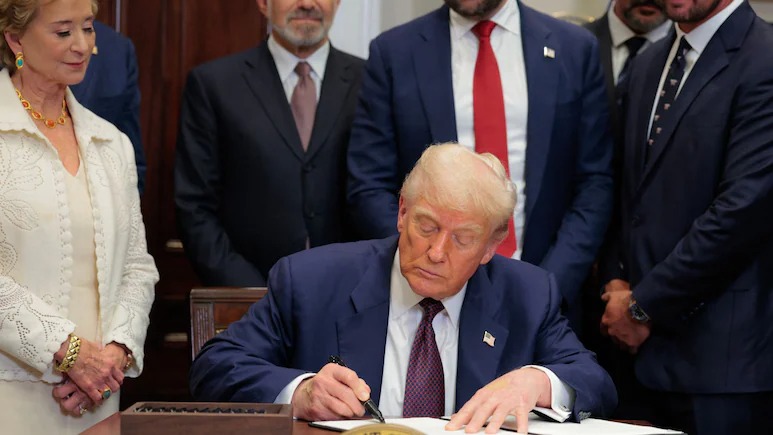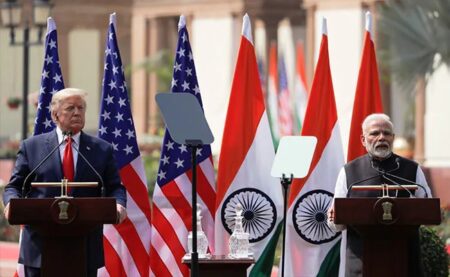The order said that goods from all other countries not listed in an annex would be subject to a 10 per cent US tariff rate.
New Delhi: In a sweeping move to reshape global trade in favor of American businesses, former U.S. President Donald Trump has signed a new executive order imposing revised import tariffs on dozens of countries. The updated list raises duties as high as 50% on certain goods, with India retaining a 25% tariff while Pakistan sees a significant reduction—from 29% to 19%.
The new tariff rates, which range from 10% to 50%, will take effect in seven days and target 69 trading partners. Nations not specifically listed in the accompanying annex will be subjected to a standard 10% import duty.
• India: Stays at a 25% tariff as talks with Washington falter over agricultural market access and continued purchases of Russian oil. The U.S. is also considering additional penalties related to India’s ties with Russia. Despite ongoing negotiations, New Delhi has pledged to protect its labour-heavy farm sector, sparking political backlash at home and causing a slump in the Indian rupee.
• Pakistan: Receives a relief, with tariffs cut from 29% to 19%, despite ongoing trade concerns.
• Brazil: Hit with a steep 50% tariff, reportedly over the country’s prosecution of former President Jair Bolsonaro, a Trump ally. However, key Brazilian sectors like aircraft, energy, and orange juice are exempted.
• South Korea: Struck a deal with the Trump administration, accepting a 15% tariff on exports, including autos—down from a proposed 25%—in exchange for a commitment to invest $350 billion in U.S. projects.
• China: Faces an unresolved trade standoff, with an August 12 deadline looming. Both nations had earlier reached interim deals in May and June to avoid further escalation.
• Canada: While maintaining North American trade pact exemptions, Canada faces an increased 35% tariff on goods tied to the U.S. fentanyl crisis, up from 25%.
• Mexico: Granted a 90-day reprieve on most non-automotive and non-metal goods under the USMCA. However, a 50% duty on metals and 25% on autos and non-compliant goods remains in place. Mexico has also agreed to eliminate several non-tariff barriers.
The European Union will see tariffs calculated based on existing duty rates. Goods already taxed at over 15% will face no additional tariffs, while those below that threshold will be adjusted accordingly. Countries like Switzerland (39%), Syria (41%), and Iraq (35%) are among the most heavily hit under the new order.
Trump defended the decision, saying that many countries had failed to offer fair terms during trade negotiations or failed to align with U.S. interests. “Despite negotiations, many partners didn’t go far enough to fix the imbalance,” the executive order states.
Trump officials confirmed that further deals are under negotiation. “We’ve got some agreements lined up, but we’ll let the President announce them,” an administration official said, suggesting this may be just the beginning of a wider trade overhaul.
This latest tariff revision marks a renewed push by Trump to press for “reciprocal” trade terms, using aggressive tariff measures as leverage to reshape international trade policy—especially with countries seen as not fully aligned with U.S. national or economic interests.








